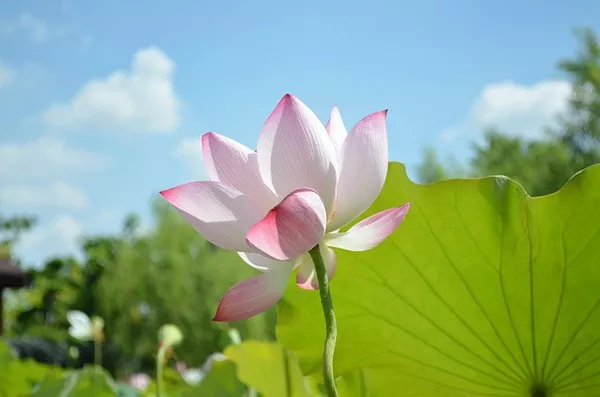Lotus, esteemed as one of China’s top 10 traditional flowers for its profound ornamental value, has long captivated admirers with its exquisite blooms. The transition from vegetative to reproductive growth, marked by the flowering behavior in lotus, is not only a botanical spectacle but also a crucial determinant of its market value. Shedding light on this botanical enigma, researchers from the Wuhan Botanical Garden of the Chinese Academy of Sciences (CAS) have uncovered the role of FLOWERING LOCUS T (FT) genes in lotus flowering, offering insights into the molecular intricacies behind this captivating process.
In their study published in Plant Physiology and Biochemistry, the researchers identified eight NnFT homologous genes, named NnFT1-NnFT8, in the Asian lotus genome. Among them, NnFT2 and NnFT3 emerged as major players, exhibiting predominant expression in floral-related organs and leaves. The researchers harnessed advanced techniques, including the proNnFT:β-glucuronidase (GUS) assay, to reveal GUS staining in the vascular tissues of leaves, underscoring the involvement of these genes in lotus flowering.
Further delving into the molecular choreography, the researchers utilized the yeast two-hybrid system coupled with a bimolecular fluorescence complementation assay. These experiments unveiled the intricate dance between NnFT2 and NnFT3 proteins and the FLOWERING LOCUS D (NnFD) protein, a vital member of the flowering activation complex. This interaction adds a layer of understanding to the molecular mechanisms orchestrating lotus flowering.
The significance of these findings extends beyond the lotus pond, as heterologous overexpression of NnFT2 and NnFT3 genes successfully rescued the late flowering phenotype in the Arabidopsis ft-10 mutant. This breakthrough highlights the stimulatory roles of NnFTs in floral induction and positions them as potential candidates for manipulating flowering time.
By deciphering the molecular intricacies of NnFTs in the lotus flowering transition, this research provides not only a theoretical foundation but also valuable genetic resources for enhancing our understanding of lotus genetics. The newfound insights open avenues for genetic improvements in lotus flowering time, promising a future where the elegance of lotus blooms can be precisely orchestrated.


